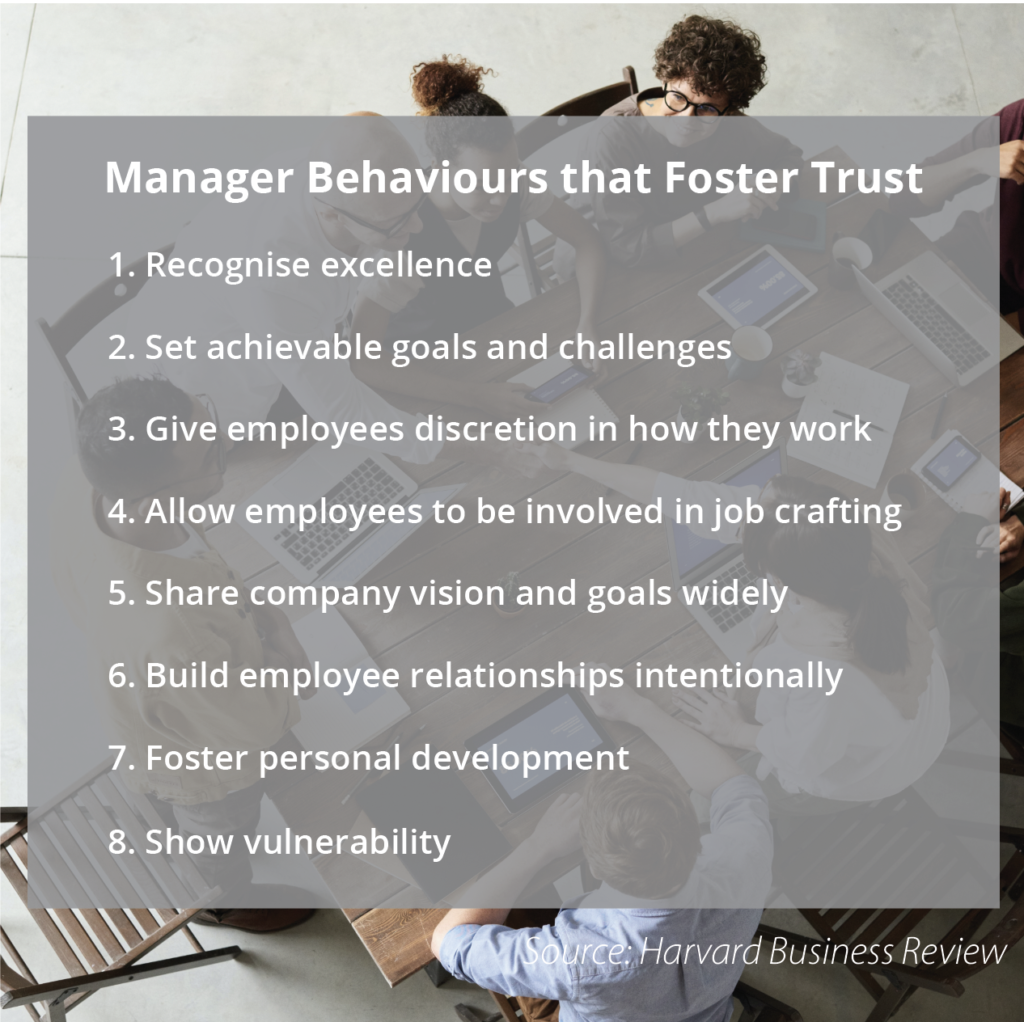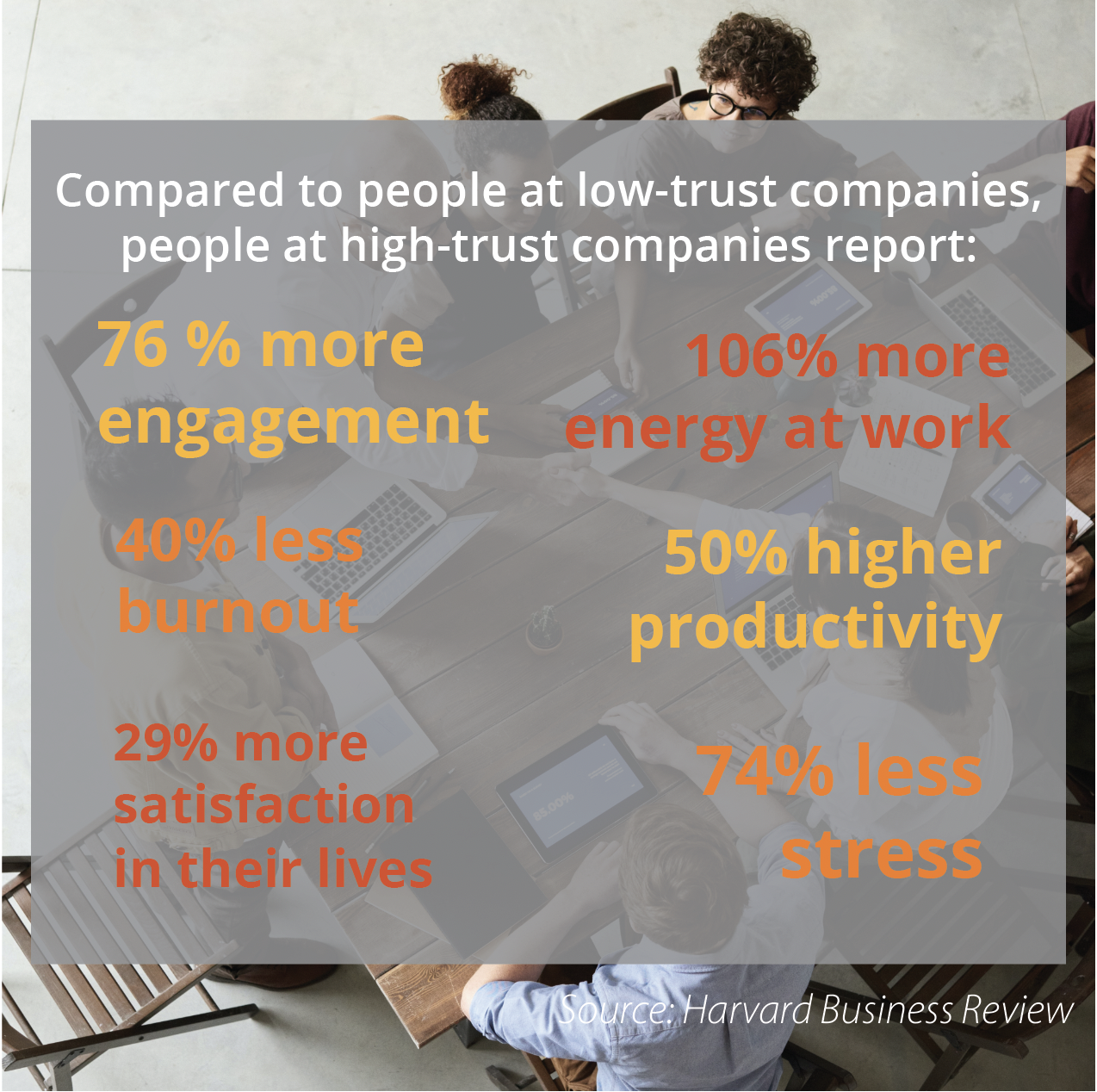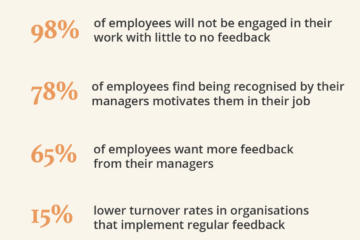The benefits of a high-trust workplace
Building a culture of trust within a workplace can have a myriad of positive effects on employees. Below are eight behaviours that managers can implement to foster a trusting work environment.


Recognise excellence
Employees should be praised for their achievements regularly and the biggest impact this can make is if it is given right after a goal has been met.
Set achievable goals and challenges
It is important to set clear tasks and goals that increase incentive for employees to engage and focus on their work. These goals must be attainable for it to have a positive effect.
Give employees discretion in how they work
Whenever it is possible and within constraints of competence, employees should be allowed to complete projects in their own way. This can help to drive innovation and promote autonomy.
Allow employees to be involved in job crafting
When employees decide what projects to work on, they are more likely to be engaged and direct their energy towards what they truly care about. This can result in a boost in productivity and employee satisfaction.
Share company vision and goals widely
Employees should be well aware of the organisation’s vision and strategy. It should be clearly communicated regularly where the company aims to go and how it plans to get there.
Build employee relationships intentionally
Team members should be encouraged to interact and help each other when possible. Manager’s that show genuine interest and care for their employees and their personal wellbeing they are more likely to increase the quantity and quality of their work.
Foster personal development
Companies that implement strategies to develop their employees personally as well as professionally it is more likely to foster trust. Investing in the whole person rather than just an employee can have a significant effect on engagement.
Show vulnerability
High-trust leaders ask for help and inspiration from their team when necessary. This is a sign of a secure leader and shows employees that you can listen and respect the opinions of your team.




0 Comments